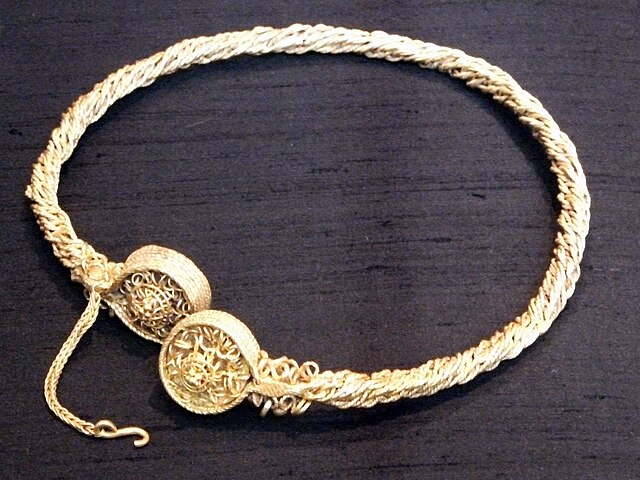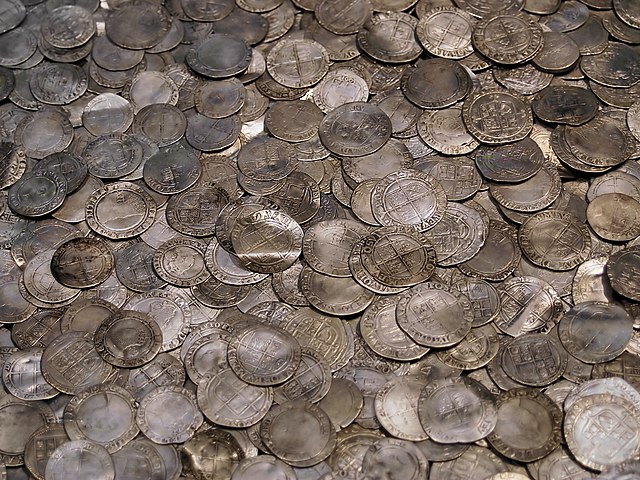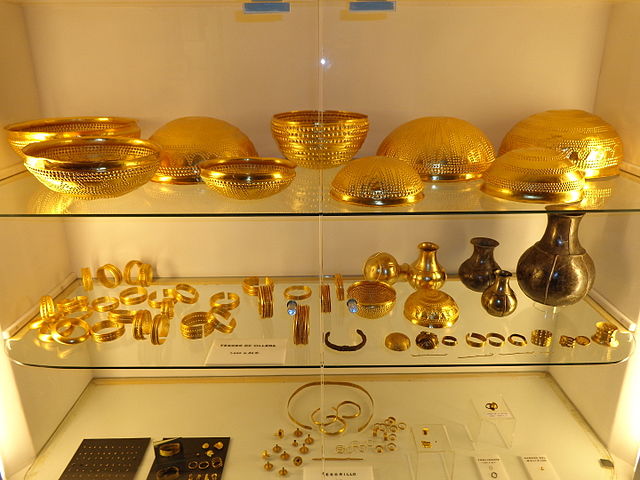The Stirling torcs make up a hoard of four gold Iron Age torcs, a type of necklace, all of which date to between 300 and 100 BC and which were buried deliberately at some point in antiquity. They were found by a metal detectorist in a field near Blair Drummond, Perthshire, Scotland on 28 September 2009. The hoard has been described as the most significant discovery of Iron Age metalwork in Scotland and is said to be of international significance. The torcs were valued at £462,000, and after a public appeal were acquired for the National Museums of Scotland in March 2011.
One of the intricate torcs
A set of four torcs discovered in Perthshire, Scotland in 2009.
1 and 2) The two twisted torcs
4) A golden torc made from eight gold wires twisted together, intricately decorated terminals with a safety chain. Manufactured between 300–100 BC.
A hoard or "wealth deposit" is an archaeological term for a collection of valuable objects or artifacts, sometimes purposely buried in the ground, in which case it is sometimes also known as a cache. This would usually be with the intention of later recovery by the hoarder; hoarders sometimes died or were unable to return for other reasons before retrieving the hoard, and these surviving hoards might then be uncovered much later by metal detector hobbyists, members of the public, and archaeologists.
A hoard of silver coins, the latest about 1700 (British Museum).
Treasure of Villena, 1000 BC, the biggest prehistoric gold hoard in Western Europe. Discovered in 1963.






